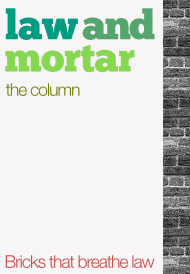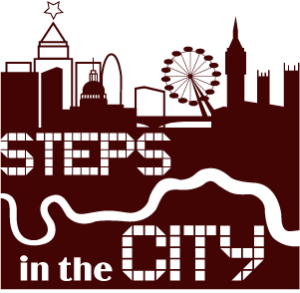The first in this series on legal buildings (Temple Church) was not an obvious choice and neither is this one – not that I’m being deliberately awkward! This time round we take a look at the seat of the City of London’s government – the Guildhall.
Sited between Basinghall and Gresham Streets in the heart of the Square Mile, it has had a chequered history. Part of it – the crypt, dates from as early as the 12th Century, but even that is young in comparison to the Roman remains that surround it, and which are on view in the basement of the next door Guildhall Art Gallery.
Most of the building dates from the 15th century, but damage in both the Great Fire of London and the Blitz in the Second World War has contributed to its mix of styles. However, it is it’s role in the law that interests us here, and it’s place as the Supreme Court of the medieval city – with administrative and judicial functions – dates back to at least 1032.
As the headquarters of the Corporation of London it today is the venue for many important ceremonial events, mostly relating to the Government of the City (the Corporation is a London borough after all) and the role of the Lord Mayor (the Court of Common Council, the City’s decision making body, is still held here in great pomp and costumes) but including State occasions – any visiting Head of State tends to be offered a dinner in their honour here – and commercial events such as the Booker Prize ceremony. Most appropriately, it is of course also the venue for City University’s graduation ceremonies!
Such glitz belies a darker history, though. For as a plaque in the current Hall reminds us, the Guildhall has been the place of trial of many famous and notorious individuals. The charge tended to be treason, though there was one famous case of seditious libel. These were crimes against the State and they needed to be held in a prime place.
The plaque lists – amongst others – Lady Jane Grey, Archbishop Cranmer and Nicholas Throckmorton. One it doesn’t name is a certain Thomas Paine, one of the main figures in both the French and American Revolutions.
I would recommend a visit (hopefully you will get to take a look around at your Graduation ceremony anyway) – the statues of the great and the good are all present and correct – Churchill, Wellington, Nelson (and few more obscure ones) – but it still easy to imagine these trials taking place, ‘show trials’ or not. At any rate, their fates were almost always the worst imaginable.
Lady Jane Grey
Queen Jane for just nine days after her father in law persuaded Edward VI to name her as his successor instead of his half sister Mary Tudor. The Catholics rallied in support of the soon to be ‘Bloody Mary’ (Queen Mary I) instead of the Protestant Jane, and she was imprisoned with her husband Lord Dudley at the Tower of London and brought for trial at the Guildhall in 1553. The charge was high treason and she was just sixteen years old. She pleaded guilty and returned to the Tower for execution.
Nicholas Throckmorton

Another victim of Queen Mary’s reign – Nicholas Throckmorton was brought to trial here in 1554 charged with complicity in a rebellion designed to overthrow Mary. Mary herself had appeared at the Guildhall earlier in the year, speaking from the dais to defend her proposed marriage to Philip of Spain. The marriage was feared to bring England under Spain’s control and led to a rebellion by Thomas Wyatt which Throckmorton supported.
Here was an early indication of the independence of a jury – despite the pressure of being asked to decide the fate of someone charged by the Crown, they found him not guilty. The Crown was not pleased – because of the verdict the jury were jailed until they paid heavy fines.
Throckmorton was still imprisoned. He was eventually released from the Tower and pardoned.
Henry Garnet
Not so famous, but part of one of the most famous events in Britain’s history. He stood trial for treason as a conspirator in the Gunpowder Plot. King James – who the plot was intended to kill – watched in private. The jury took 15 minutes to convict Garnet and he was sentenced to be hung, drawn and quartered.
Thomas Paine
On 18th December 1792 Spencer Perceval, (later to become Prime Minister and the only one to date to have been assassinated) for the Prosecution, took on Thomas Erskine, for the Defence, in the trial, in absentia, of the author of two of the best selling books of the 18th century. ‘Common Sense’ and the ‘Rights of Man’ (the latter being partly written at the Inn which gives the Angel, Islington it’s name – hence the statue of Paine in Angel Square) championed republicanism and social welfare in a way that was far ahead of time. Unsurprisingly, this did not make the author popular amongst the ruling classes especially at the time of the American and French Revolutions. The gloves were well and truly off, Prime Minister Pitt issued a proclamation and Paine was ordered to be tried at the Kings Bench at the Guildhall for seditious libel.
He was found guilty by a hand picked jury who were guaranteed dinner and two guineas if they came to a ‘correct’ verdict.
Paine, fearing for his life, had fled to a more friendly France. Ironically he was nearly executed later on after refusing to vote for King Louis’s execution. He then fled back to America, where he had played such a large part in inspiring the Revolution, but he died in New York in obscurity. Even his bones were later lost. The place where he died is now a pub in Greenwich Village.
Susan Doe is Director of Information & Research for the European offices of Sidley Austin LLP, a US firm with headquarters in Chicago. Her remit is Library and Information services, know how and solicitor’s regulatory compliance.
A Law degree from the LSE and postgrad in Information Science has lead to 23 years in legal information, spanning 3 law firms.
Susan qualified as a City of London tour guide in 2008 and spent the summer inflicting her knowledge of London on unsuspecting tourists during a stint as a ‘London Ambassador’ for the Olympics.
You can find out about her walks via Steps in the City


